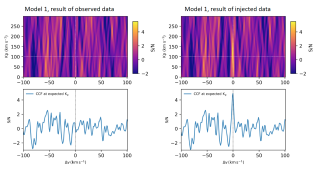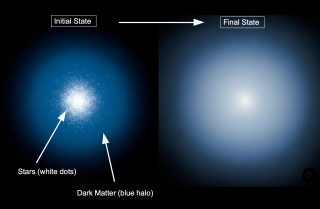A long-standing issue in solar astrophysics concerns the strength and structure variations with height of the magnetic field in the chromosphere of the quiet Sun. Our empirical knowledge on this issue has remained vague notwithstanding the qualitative information provided by high resolution monochromatic images of the solar atmosphere taken at various wavelengths across strong spectral lines like H-alpha showing a mass of cell-spanning fibrils as a flattened carpet, with upright ones jutting out from network patches. Unfortunately, such images do not provide quantitative information on the magnetic field vector. On the other hand, the amplitude and shape of the scattering polarization profile of the H-alpha line observed close to the disk edge is very sensitive to the strength and structure of the magnetic field in the upper solar chromosphere. This linear polarization is due to the presence of radiatively induced population imbalances and quantum coherences among the magnetic sublevels of the line's levels, which produce Q/I profiles whose maximum values are usually located at the line center. This scattering line polarization is modified in the presence of magnetic fields via the Hanle effect, which gives rise to Q/I and U/I profiles different to those corresponding to the zero-field case. Therefore, the Hanle effect in lines like H-alpha is the physical mechanism that should be exploited for facilitating quantitative explorations of the magnetism of the "quiet" solar chromosphere.
In the quiet Sun the fractional linear polarization signals of the H-alpha line are weak (i.e., of the order of 0.1% when observing close to the solar limb), so that their detection with the present telescopes requires sacrifice the spatio-temporal resolution to be able to achieve high polarimetric sensitivity. As a result, it is easier to detect Stokes Q (with the tangent to the nearest solar limb being its reference direction) than Stokes U signals (whose positive and negative values quantify the rotation of the direction of linear polarization). For these reasons, typically only the Stokes Q/I profile is available, as is indeed the case with the H-alpha interpreted here. A comparison of such average polarization profiles with the theoretical predictions of the Q/I profiles of the average quiet-Sun model atmosphere allows to infer the quantitative information on the magnetization of the quiet chromosphere. The available Q/I profile observations (Gandorfer, A. 2000, Atlas of the Second Solar Spectrum) in a quiet region at about 5'' from the solar limb show a peculiar line core asymmetry (LCA) which is not present in the corresponding intensity line profile and whose very existence cannot be explained by the mere fact that the H-alpha line results from the superposition of seven components, four of which contribute to Stokes Q.
The authors report on a detailed radiative transfer modeling of the observed scattering polarization in the H-alpha line and show that the LCA present in the observed Q/I profile can be explained by the Hanle effect of a magnetic field in the solar atmosphere whose height variation suggests the presence of a magnetic complexity zone located in the upper chromosphere of the quiet Sun with a mean field strength B > 30 G. The analysis suggests that this zone is located just below the sudden transition region to the coronal temperatures. The chromospheric plasma directly underneath is very weakly magnetized, with B of the order of 1 G. The probable existence of an abrupt change in the mean magnetization of the upper chromosphere of the quiet Sun may have large significance for the passage of emerged magnetized plasma across the chromosphere and into the corona and for the overall energy balance of the outer solar atmosphere. For instance, coronal reconnection and dissipation of magnetic energy may be significantly modulated by the physical conditions in the upper chromosphere and by the height at which neighboring magnetic fibrils begin to press against each other. The presence of a strong and abrupt magnetization in the upper chromosphere of the quiet Sun might also hold the clue for clarifying the physical origin of the elusive acceleration mechanism of the solar wind.


